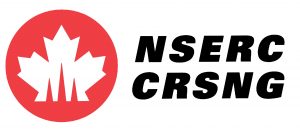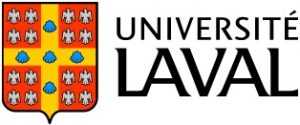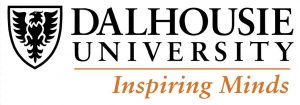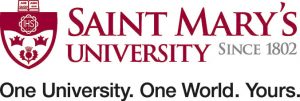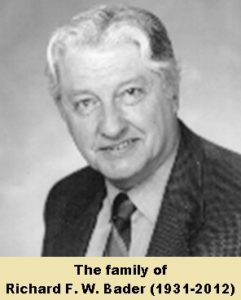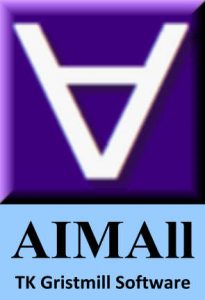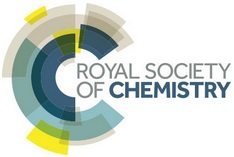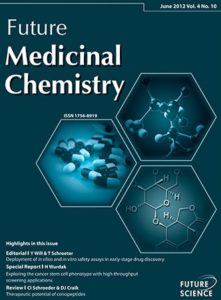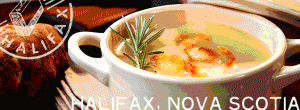| Chair’s Welcome to Canada & to Sagamore 2018!
Mount Saint Vincent University in Nova Scotia, Canada, is proud to host this year’s Sagamore XIX Conference of the International Union of Crystallography’s (IUCr) Commission of Quantum Crystallography (CQCr). The conference’s venue is the Halifax Convention Center (HCC), recently built in the vibrant downtown of Halifax, Nova Scotia’s Capital city. Sagamore began in 1964 as an international conference dedicated to the study of electron charge, spin and, later, momentum densities. Canada played host to the 1979 Sagamore conference in Mont Tremblant, Québec, as well as welcoming the 1997 Sagamore in Saskatchewan’s Prince Albert National Park’s Waskesiu Lake.[1] Sagamore, thus, returns to Canada after 21 years! Welcome back to Canada, Sagamore, and welcome to Sagamore and to Canada, my fellow “Sagamorians”! Bienvenue au Canada! Sagamore 2018, your conference, lives up, thanks to you, to its international tradition and reputation. You, nearly eighty registered participants, hail from Australia, Canada, China, Colombia, Croatia, Cuba, France, Germany, Hong Kong, India, Italy, Japan, Mexico, Poland, Russia, Slovak Republic, Spain, Switzerland, UK, and the USA – and if we include national origins as well, you may add Bangladesh, Greece, Egypt, Iran, South Korea, Ukraine, and Vietnam to the list. Thus, this year’s Sagamorians come from 27 countries representing all six (populated) continents of the globe (skipping only Antarctica!) A BIG WELCOME from me to you all on behalf of my co-Chair, Prof. Paul W. Ayers, and on behalf of the entire Organization Team. I wish to thank you all for making this event possible through your participation; for bringing your science, sense of humour, and friendship along with the ever-present open mindedness we all continue to enjoy at Sagamore conferences. I wish to thank the present and past Members & Consultants of the IUCr – CQCr, and our discussion leaders, Dr. Carlo Gatti, Prof. Enrique Espinosa, Prof. Dylan Jayatilaka, Prof. Piero Macchi, and Prof. Masaki Takata. Each of you have agreed to come – while traveling great distances – to lead the round table discussions on the science of Quantum Crystallography and its policy, work that will no doubt have an influence in shaping the future of this scientific undertaking. Following a conference as great as the 2015 Sagamore XVIII in Sardinia, Italy, is daunting at the very least. However, the passing of the torch could not have been more gracious. Our previous Sagamore Chair, Dr. Carlo Gatti, has been extremely generous with his information, sharing advice, insights, and direct help at every stage of the organization of the Halifax conference. Thank you Carlo! The Organization Team has also benefitted immensely from the experience and knowledge so kindly shared with us by Prof. Piero Macchi, the outgoing Chair of the Commission, and by Prof. Jean-Michel Gillet, its current Chair since 2017. Prof. Claude Lecomte and Prof. Lou Massa have both been instrumental in helping us with their crucial suggestions and recommendations, thoughts, ideas, and also in establishing numerous key contacts indispensable for the planning of our event. Many thanks Piero, J-M, Claude, and Lou! Since Sagamore 2015 (XVIII), our community has lost two of its giants: Prof. Robert Farrell Stewart (1936 – 2015) and Prof. Philip Coppens (1930 – 2017). The Chair, co-Chair, and the entire Sagamore 2018 Organization Team humbly dedicate this conference in honour of Professor Stewart’s and Professor Coppens’ monumental work and contribution to the field. Obituary tributes to Bob and Philip have appeared in Acta Cryst. A, and are reproduced in the Book of Abstracts in full with the IUCr’s and the authors’ permissions (Professor Mark A. Spackman, and Professor Pierre Becker, respectively). We are grateful to Mark, Pierre, and the IUCr for allowing us to reproduce these obituaries. Another important tribute to Philip, originally a festschrift turned into a memorial issue, appears in the form of a special issue of Acta Cryst. B (August 2017). This special issue, to which many of you have contributed invited articles, was edited by Profs. Claude Lecomte, Jason Benedict, and Yu-Sheng Chen and is entitled “Special issue on charge density, photocrystallography and time-resolved crystallography: a tribute to Professor Philip Coppens”. In Hyderabad, India, in August 2017, the IUCr’s General Assembly approved the renaming of its “Commission on Charge, Spin, and Momentum Densities” to “Commission on Quantum Crystallography”. There have been a number of recent meetings reflecting the growing interest in Quantum Crystallography (QCr). For example, the CECAM Discussion Meeting: Quantum Crystallography: Current Developments and Future Perspectives in 2017, organized by Dr. Alessandro Genoni and Prof. Simon Grabowsky; and the Erice School of Crystallography 2018: 52nd Course: Quantum Crystallography, organized by Prof. Piero Macchi and Prof. Dylan Jayatilaka. A number of journals’ special issues and articles centred on QCr have also recently appeared, including a festschrift in Struct. Chem. (Issue of October 2017) honoring Professor Lou Massa, plus two recent 2018 special issues of J. Comput. Chem. (co-edited by Lou and I); a recent multi-author article in the press of Chem. Eur. J. led by Ale and Simon; and a Wikipedia article – all on the topic of the Commission’s “namesake”. Consistently with the emerging view from these venues, Sagamore 2018 attempts to embrace neighbouring and related disciplines under its QCr umbrella. The strong participation of pioneers from the molecular imaging, laser-molecule interaction, and confined quantum systems communities exemplify a step in this direction at Sagamore 2018. It is noteworthy that at least two of these pioneers have made early and lasting contributions to the study of the topology and the 3D topography of the electron density “à la QTAIM, in modern parlance” before eventually leading the cutting edge of theory of the interaction between molecules and intense laser fields, coherent control of chemical reactivity, and orbital imaging. QCr is hoped to be the crystallization seed that attracts neighbouring disciplines opening unforeseen new horizons for all of us. The impetus of the name-change to CQCr coincides with the Sagamore 2018 Organizing Team’s initiative of instating two International Prizes to encourage and reward excellence and healthy competition in our community. One of these two new prizes is awarded to an established scientist at the peak of his/her career. This award is given in the name of Professor Richard F. W. Bader (1931 – 2012), who was one of the most influential theorists of the electron density with a legacy including the Quantum Theory of Atoms in Molecules (QTAIM). The second prize is intended to reward early career brilliance, which reflects the brilliance of the prize’s namesake, the late Professor Miguel A. Blanco (1969 – 2010). To ensure both fairness and independence of the selection process for these two prizes, my co-Chair and I kept our maximal distance from the prize committees, the nomination and selection process, and the voting, all of which were strictly confidential. Only once the final decisions were made did the committees’ chairs share the competition results with my co-Chair, Prof. Ayers, and myself. The Bader Prize committee was chaired by Dr. James Britten and the Blanco Prize was chaired by Dr. Carlo Gatti. I thank both Jim and Carlo and the members of their respective committees for their time and careful evaluation of the submitted nominations. I note in passing that self-nominations were allowed in addition to the standard nomination by others. As Chair of Sagamore 2018, I was informed that the competition for both prizes this year was stiff. I have already announced the names of the 2018 winners by email, and judging from the replies I have received to date, the QCr/Sagamore community appears to be very satisfied and happy with both choices. It is with the greatest pleasure, and on behalf of Prof. Paul W. Ayers and of the entire Organization Team, that I warmly congratulate: Prof. Paul L. A. Popelier for winning the (Inaugural) 2018 Richard F. W. Bader International Prize for Excellence in Electron Density Research: “for his exceptional contributions in the development of pure and applied Quantum Chemical Topology (QCT)”, and Dr. Eduard Matito i Gras for winning the 2018 Miguel A. Blanco International Prize for Early Career Work in Charge Density: “for his original and outstanding contributions in the development of new quantum mechanical methods and of new descriptors of chemical behaviour based on the electron and electron pair density distributions”. Sagamore 2018 has been generously supported, both financially and administratively, by the local hosting organization, Mount Saint Vincent University (MSVU, or “The Mount”, as we commonly call it here). We have also benefited from the largesse of other generous donors/sponsors, all of whom are acknowledged on a page of this book devoted to that purpose and elsewhere. I wish to single out here Mr. Jeff Turner, Sales Director, Discover Halifax (one of our sponsors), for his incredible help and support especially in the early planning phases of Sagamore 2018 – help that he continues to offer until today. Thank you Jeff for all the ideas and help you provided and continue to provide! In this regard, I acknowledge with much gratitude the invaluably strong support of MSVU current and former Presidents and Vice-Chancellors Dr. Mary Bluechardt and Dr. Ramona Lumkin; MSVU Vice President and Provost Dr. Elizabeth Church; MSVU Associate VP – Research Dr. Gayle MacDonald; and my Dean of Arts and Science, Dr. Brook Taylor. The prospect of the success of Sagamore 2018 rests in large part due to the work of the core event Planning and Organization Team, led by our Finance Manager Ms. Cathleen Madgett, Event Manager Ms. Lisa Cochrane and our Administrative Assistant Ms. Kerri AlSaidi, who put together this book of Abstracts, and Website Administrator Mr. Paul Lindgreen. I also wish to thank our wonderful student volunteer team: Ms. Tammy Lauritsen, Mr. Lázaro A. Monteserín Castanedo, and Mr. Youji Cheng. Thank you so much Lisa, Cathleen, Kerri, Paul, Tammy, Lázaro, and Youji! Everyone appreciates your creative efforts and really great work. In closing, I wish you all a very pleasant stay in Halifax, the capital city of the wonderful Canadian Province of Nova Scotia, and an intellectually rich and rewarding experience at Sagamore 2018. We welcome you with open arms!
In person and on behalf of: Prof. Paul W. Ayers, Co-Chair of Sagamore 2018, and the entire Organization Team.
Halifax, 26 July 2018 [1] See an account of the history of the Sagamore series of conferences in Malcom Cooper’s article “The Saga of Sagamore”, Phys. Script. 91 (2016) 012501. Biographical notes on both prizes namesakes, M. A. Blanco and R. F. W. Bader, can be found near the end of the book of Extended Abstracts.
[2] Genoni A, Grabowsky S. CECAM Discussion Meeting: Quantum Crystallography: Current Developments and Future Perspectives, Nancy (France) 19-20 June 2017 (https://qcrystcecam.weebly.com/) [3] Jayatilaka D, Macchi P. International School of Crystallography: 52nd Course: Quantum Crystallography (http://crystalerice.org/2018/)Ettore Majorana Foundation and Centre for Scientific Culture, Erice (Italy), (2018) . [4] Huang L, Massa L, Karle J. Quantum kernels and quantum crystallography: Applications in biochemistry. Quantum Biochemistry: Electronic Structure and Biological Activity; Wiley-VCH, Weinheim (2010), pp 3-60. [5] Grabowsky S, Genoni A, Bürgi H-B. Quantum crystallography. Chem. Sci. 8, 4159-4176 (2017). [6] Genoni A, Bucinský L, Claiser N, Contreras-Garcia J, Dittrich B, Dominiak PM, Espinosa E, Gatti C, Giannozzi P, Gillet J-M, Jayatilaka D, Macchi P, Madsen AØ, Massa L, Matta CF, Merz Jr. KM, Nakashima P, Ott H, Ryde U, Scherer W, Schwarz K, Sierka M, Grabowsky S. Quantum crystallography: Current developments and future perspectives. Chem. Eur. J. in press (2018). [7] Matta, C. F.; Massa, L. (Guest Editors). “Special Issue: Quantum Crystallography – PART 1 of 2 ” Journal of Computational Chemistry, Volume 39, Issue 17 (June 30, 2018), pp. i, 1013-1075 (2018). [8] Matta, C. F. (Guest Editor). “Special Issue: Honoring Professor Lou Massa – A Path through Quantum Crystallography” Structural Chemistry, Volume 28, Issue 5 (October 2017), pp. 1277-1605 (2017). [9] Gatti, C., Macchi, P.; Modern Charge Density Analysis; Springer: Germany, (2012). [10] Jayatilaka D. “Using wavefunctions to get more information out of diffraction experiments.” In: Modern Charge-Density Analysis, Carlo Gatti & Piero Macchi (Eds.). Springer, Berlin (2012). [11] Jayatilaka D, Grimwood DJ. Wavefunctions derived from experiment. I. A wavefunction for oxalic acid dihydrate. Acta Cryst. A 57, 76-86 (2001). [12] Macchi P. Modern charge density studies: the entanglement of experiment and theory. Cryst. Rev. 19, 58-101 (2013). [13] Massa, L.; Matta, C. F. “Quantum crystallography: A perspective”, Journal of Computational Chemistry 39, 1021-1028 (2018). [14] Massa, L.; Matta, C. F. “Exploiting the full quantum crystallography”, Canadian Journal of Chemistry, in press (2018). [15] Polkosnik W, Massa L. “Single determinant N-representability and the kernel energy method applied to water clusters”. J. Comput. Chem. 39, 1038-1043 (2018). Updated: 24 May 2018 |
Updated: 18 Aug. 2018
|
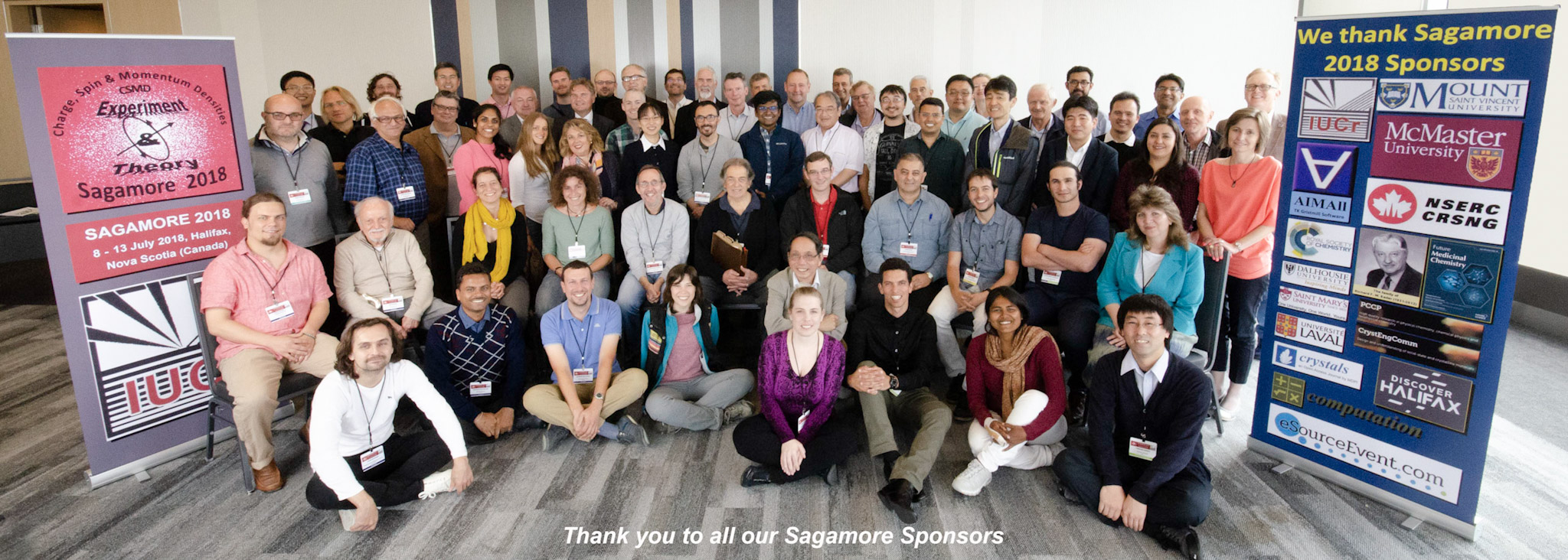
Participants in Sagamore 2018 (Halifax, NS, Canada)

Declaration: Sagamore conferences shall affirms the right and freedom of scientists to associate in international scientific activities without regard to ethnic origin, religion, citizenship, language, political stance, gender, sex or age, in accordance with the Statutes of the International Council for Science.
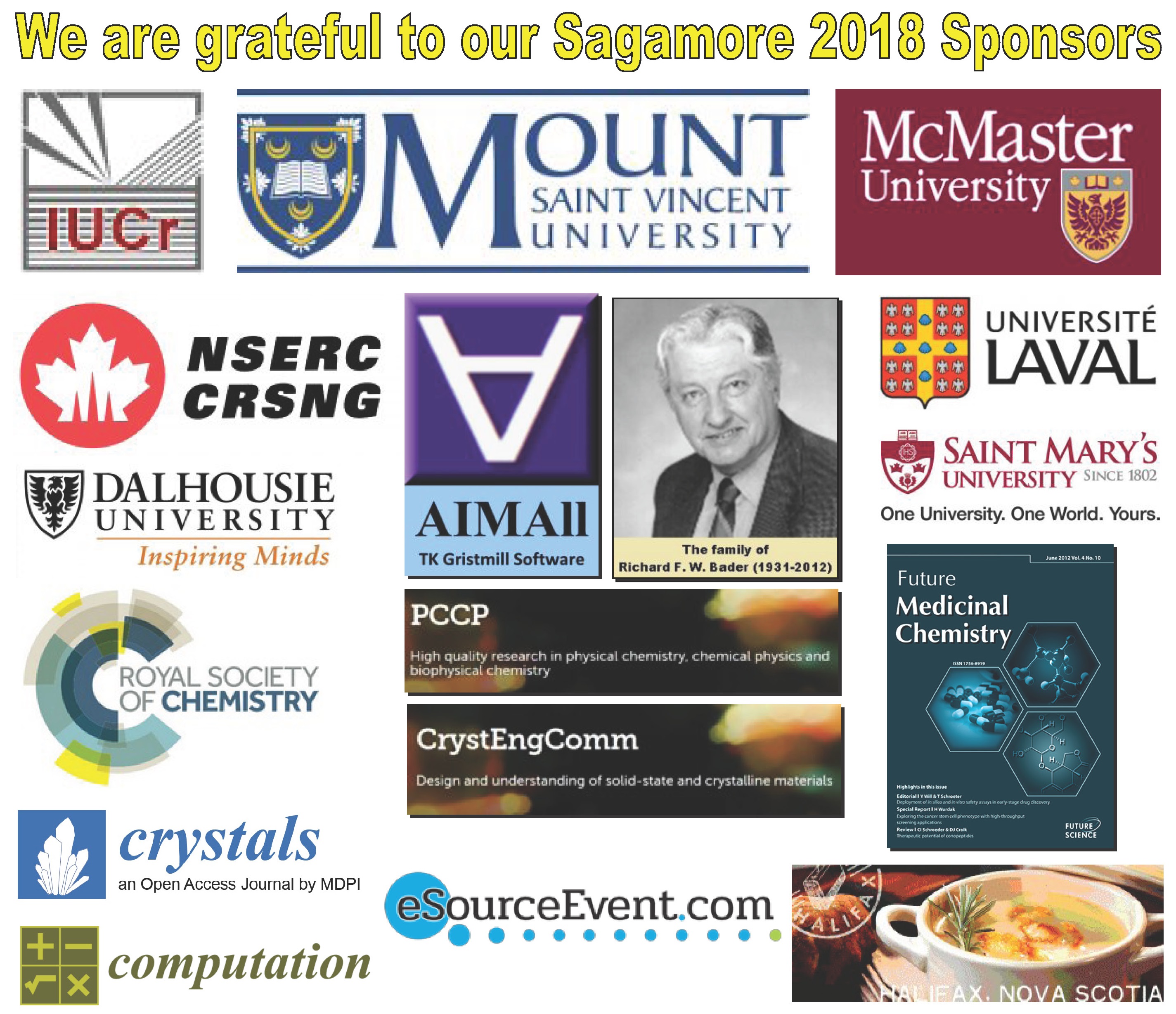

 Chérif F. Matta
Chérif F. Matta

